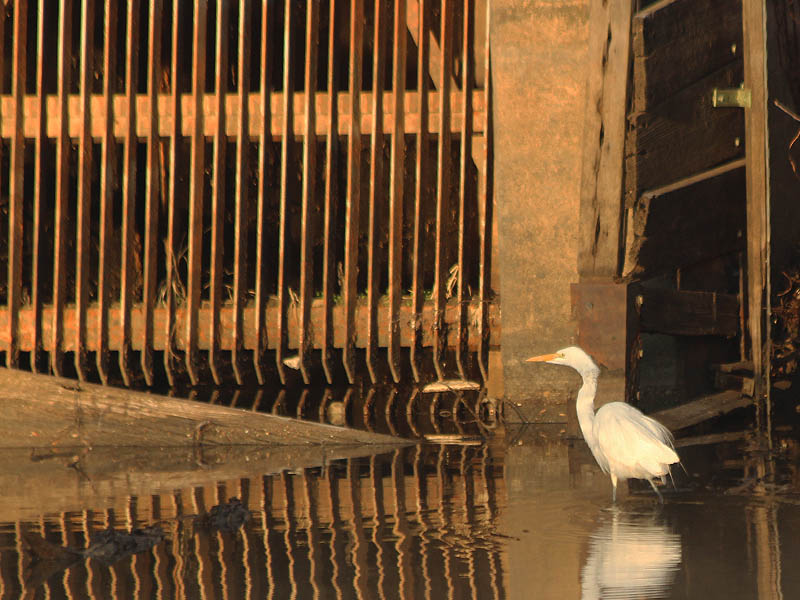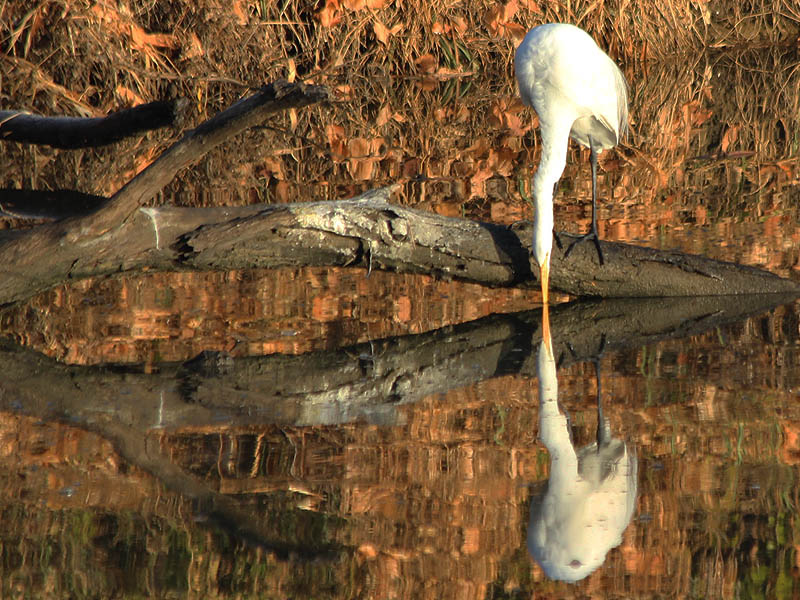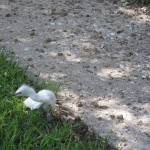These Great Egrets were photographed near Carrollton Dam located at the intersection of the Trinity River and Sandy Lake Road. Carrollton Dam was built 1912 to help control flooding in the east part of Coppell. These days its primary function is to impound water for the Elm Fork Water Treatment Plant in Carrollton. In 2013, over a hundred years after its original construction, Carrollton Dam was largely demolished and rebuilt as part of an extensive improvement plan. The dam is currently owned by the city of Dallas and operated by Dallas Water Utilities.

There were a number of Great Egrets at this location on the day I visited and each was busy with typical wading bird activities. Wikipedia describes Great Egrets in this way:
The Great Egret is a large heron with all-white plumage. Standing up to 1 m (3.3 ft) tall, this species can measure 80 to 104 cm (31 to 41 in) in length and have a wingspan of 131 to 170 cm (52 to 67 in). Body mass can range from 700 to 1,500 g (1.5 to 3.3 lb), with an average of around 1,000 g (2.2 lb). It is thus only slightly smaller than the Great Blue or Grey Heron (A. cinerea). Apart from size, the Great Egret can be distinguished from other white egrets by its yellow bill and black legs and feet, though the bill may become darker and the lower legs lighter in the breeding season. In breeding plumage, delicate ornamental feathers are borne on the back. Males and females are identical in appearance; juveniles look like non-breeding adults. Differentiated from the Intermediate Egret (Mesophoyx intermedius) by the gape, which extends well beyond the back of the eye in case of the Great Egret, but ends just behind the eye in case of the Intermediate Egret.
It has a slow flight, with its neck retracted. This is characteristic of herons and bitterns, and distinguishes them from storks, cranes, ibises, and spoonbills, which extend their necks in flight.
The Great Egret is not normally a vocal bird; at breeding colonies, however, it often gives a loud croaking cuk cuk cuk.












